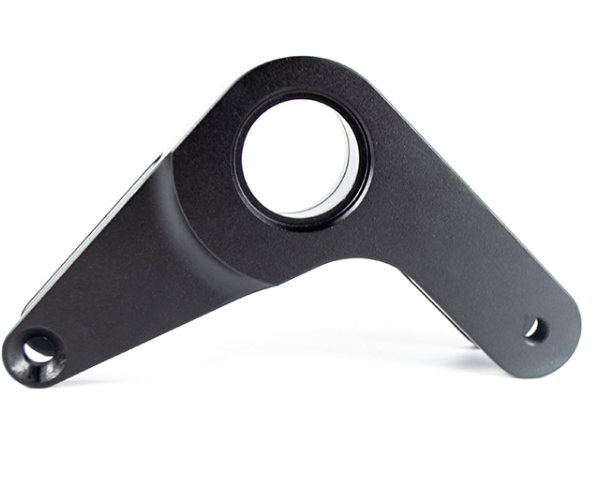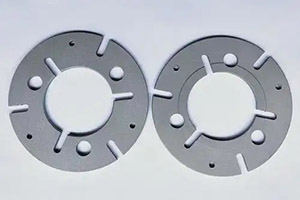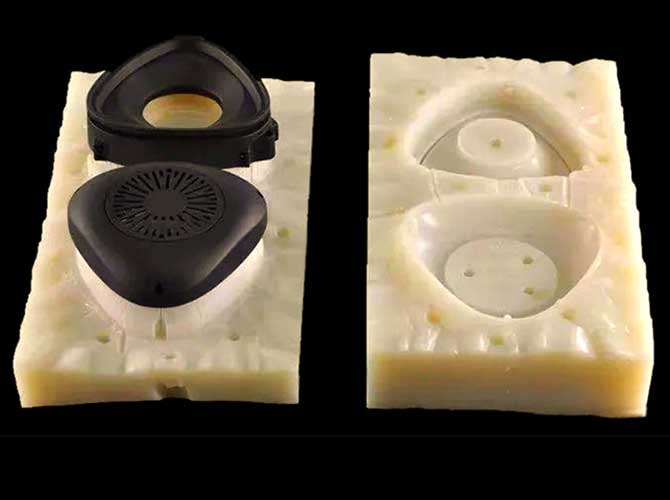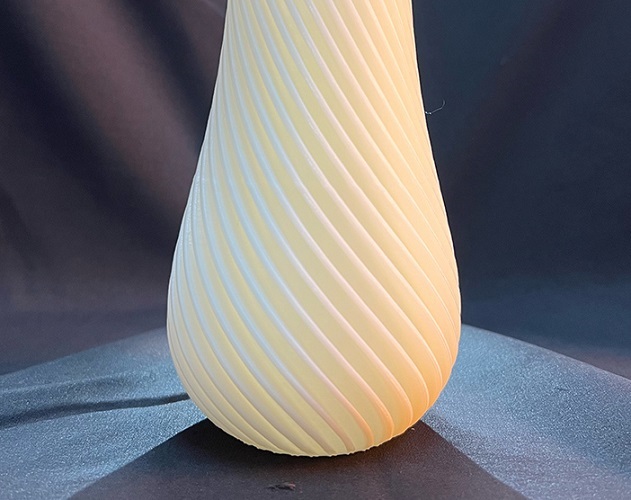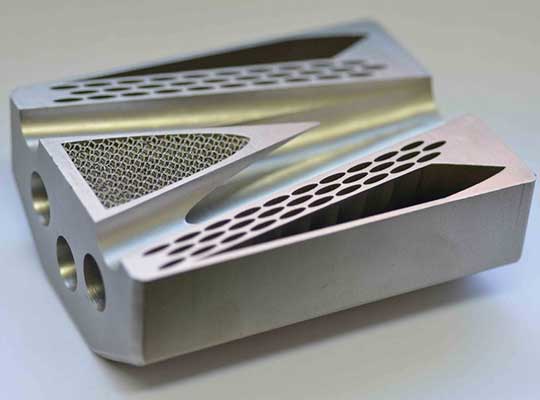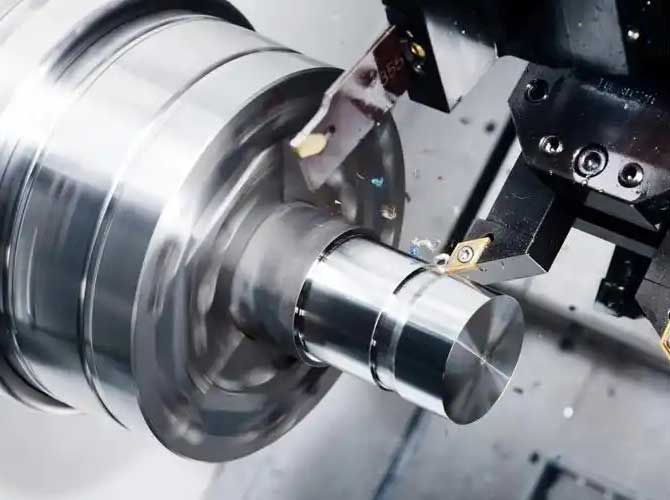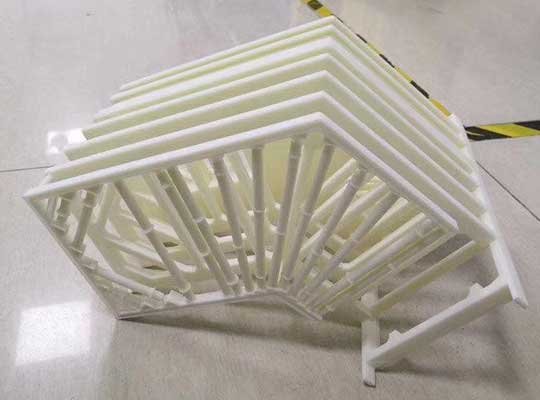If you’re a product designer, مهندس, or entrepreneur gearing up for prototype development, one of the first and most critical questions you’ll face is: What materials can be used for prototype processing? The right material choice directly impacts your prototype’s functionality, متانة, يكلف, and even how well it represents the final product. في هذا الدليل, we’ll break down all common prototype materials—from metals to plastics and beyond—explain their key properties, ideal use cases, and processing tips, so you can make an informed decision for your project.
Why Material Choice Matters for Prototype Processing
Before diving into specific materials, let’s clarify why this decision is so important. A prototype isn’t just a “test piece”—it’s a tool to validate design, أداء الاختبار, and showcase your product to stakeholders. The wrong material can lead to:
- Inaccurate performance tests: على سبيل المثال, using a weak plastic for a structural part prototype won’t reflect how the final metal version will hold up.
- Wasted time and money: If a material is too hard to machine or doesn’t meet your project’s needs, you’ll have to restart the prototype process.
- Poor stakeholder perception: A low-quality prototype (على سبيل المثال, a brittle plastic that cracks easily) can undermine confidence in your design.
That’s why understanding the pros, cons, and best uses of each material is essential. أقل, we’ll cover the three main categories of prototype materials: metal alloys, الفولاذ المقاوم للصدأ, و البلاستيك—plus special materials for unique needs.
سبائك معدنية: Strong and Durable Prototype Materials
Metal alloys are a top choice for prototypes that need strength, صلابة, or resistance to wear. They’re commonly used for industrial parts, مكونات السيارات, and structural prototypes. Let’s break down the most popular metal alloys for prototype processing, their properties, والتطبيقات المثالية.
| Metal Alloy Type | Common Grades | الخصائص الرئيسية | Processing Method (CNC/3D Printing) | خيارات المعالجة السطحية | Ideal Prototype Use Cases |
| سبائك الألومنيوم | 2024, 6061, 6063, 6082, 7075, ADC12 | خفيف الوزن (density: 2.7 ز/سم), good strength, corrosion-resistant | تصنيع CNC (الأكثر شيوعا); 3د الطباعة (for complex shapes) | بلاستيك الرمال, الأنود, تلوين | Aerospace parts, automotive brackets, electronic enclosures |
| Bronze | C51000, C54400 | High ductility, good electrical conductivity | تصنيع CNC | تلميع, تصفيح | الموصلات الكهربائية, أجزاء زخرفية |
| النحاس | C26000 (Cartridge Brass) | Machinable, corrosion-resistant, golden appearance | تصنيع CNC | تلميع, lacquering | Decorative prototypes, hardware components |
| نحاس | Electrolytic Copper (C11000) | Excellent electrical conductivity, malleable | تصنيع CNC, 3د الطباعة (معدن) | تلميع, tin plating | أحواض الحرارة, electrical prototypes |
| Titanium Alloy | TI-6AL-4V | نسبة عالية من القوة إلى الوزن, corrosion-resistant (even in saltwater) | تصنيع CNC (slow, due to hardness); 3د الطباعة | Anodizing, التخميل | الأجهزة الطبية, aerospace components |
| سبيكة المغنيسيوم | AZ31B, AZ91D | Ultra-lightweight (density: 1.8 ز/سم), good stiffness | تصنيع CNC | Chemical conversion coating | Lightweight automotive parts, إلكترونيات المستهلك |
| Zinc Alloy | ZA-8, ZA-12 | Low melting point, من السهل الإلقاء | Die Casting (for small batches), تصنيع CNC | Chromate conversion coating | Toy prototypes, small structural parts |
Key Notes on Aluminum Alloys
Aluminum alloys are the most widely used metal materials for prototypes—and for good reason. Grades like 6061 و 6063 are easy to machine (CNC machining can finish a 6061 prototype in 1–3 days) and offer a great balance of strength and cost. 7075 aluminum is stronger (used for high-stress parts) but slightly harder to machine, so it may add 1–2 days to your prototype lead time.
بعد الآلات, aluminum prototypes are often sandblasted to remove tool marks and anodized (a process that adds a protective oxide layer) to improve surface quality and durability. Anodizing also lets you add color (على سبيل المثال, أسود, فضي, أزرق) to your prototype—perfect for presentation.
الفولاذ المقاوم للصدأ: High-Strength and Corrosion-Resistant
Stainless steel is a subset of steel that contains chromium (at least 10.5%), which gives it excellent corrosion resistance. It’s ideal for prototypes that will be exposed to moisture, المواد الكيميائية, or high temperatures. Below are the most common stainless steel types for prototypes.
| Stainless Steel Type | Common Grades | الخصائص الرئيسية | القابلية للآلات (1=Easy, 5=Hard) | Magnetic? | Ideal Prototype Use Cases |
| Austenitic (Most Common) | 304, 316 | Non-magnetic, high corrosion resistance, ductile | 3 (معتدل) | لا | Food processing equipment, medical tools, marine parts |
| Ferritic | 409, 430 | Magnetic, good corrosion resistance, lower cost | 2 (سهل) | نعم | Automotive exhaust parts, household appliances |
| Martensitic | 410, 420 | Magnetic, hardenable (via heat treatment), قوة عالية | 4 (Hard) | نعم | Cutting tools, الصمامات, high-stress mechanical parts |
| Galvanized Steel | G90, G60 | Zinc-coated (prevents rust), تكلفة منخفضة | 2 (سهل) | نعم | Outdoor prototypes, structural brackets |
| Mild Steel (Low Carbon Steel) | 1018, 1020 | تكلفة منخفضة, سهل الجهاز, good weldability | 1 (سهل) | نعم | Basic structural prototypes, قوسين |
Why 304 و 316 Stainless Steel Are Top Choices
304 الفولاذ المقاوم للصدأ is the most popular for prototypes—it’s affordable, سهل الجهاز, and works for most non-extreme environments. 316 الفولاذ المقاوم للصدأ is more corrosion-resistant (thanks to added molybdenum) but costs 20–30% more. It’s worth the extra cost for prototypes that will be exposed to saltwater (على سبيل المثال, marine parts) or chemicals (على سبيل المثال, laboratory equipment).
One unique benefit of stainless steel is its magnetic absorption (for ferritic and martensitic grades). This makes it ideal for prototypes that need to attach to magnetic surfaces—like a tool prototype that needs to stick to a workshop magnet board.
Plastic Materials: Versatile and Cost-Effective for Prototypes
Plastics are the most versatile prototype materials—they come in a wide range of hardness, المرونة, الشفافية, and heat resistance. They’re perfect for consumer products, الإلكترونيات, الأجهزة الطبية, and prototypes where weight or cost is a concern. Let’s break down the most common plastics for prototype processing, plus when to choose 3D printing vs. تصنيع CNC.
Common Plastic Materials for Prototypes
| Plastic Type | Common Grades/Variants | الخصائص الرئيسية | Processing Suitability (3D Printing/CNC) | مقاومة درجة الحرارة (Max) | Ideal Prototype Use Cases |
| القيمة المطلقة | Standard ABS, High-Temperature ABS | مقاوم التأثير, سهل الجهاز, تكلفة منخفضة | تصنيع CNC (excellent); 3د الطباعة (FDM) | 80–100°C | Consumer electronics enclosures, toy prototypes |
| ص (البولي بروبيلين) | PP Homo, PP Copolymer | مقاوم للمواد الكيميائية, مرن, خفيف الوزن | تصنيع CNC; 3د الطباعة (FDM) | 100–120°C | حاويات الطعام, علب الأجهزة الطبية |
| الكمبيوتر الشخصي (البولي) | Lexan (brand name) | قوة عالية التأثير, شفاف, مقاوم للحرارة | تصنيع CNC; 3د الطباعة (SLA/FDM) | 120–135°C | Safety goggles, electronic display covers |
| PMMA (الأكريليك) | Plexiglas (brand name) | شفاف (92% انتقال الضوء), مقاوم للخدش | تصنيع CNC; 3د الطباعة (SLA) | 80–90°C | Display cases, transparent prototypes |
| بوم (أسيتال) | Delrin (brand name) | Low friction, صلابة عالية, مقاومة للارتداء | تصنيع CNC | 100–110°C | التروس, المحامل, المكونات الميكانيكية |
| PU (Polyurethane) | Domestic PU, Imported PU, Transparent PU, Soft PU | مرن (Shore hardness: 30A–90D), متينة | 3د الطباعة (SLA for soft variants); تصنيع CNC (for rigid variants) | 80–100°C | Cushioned parts, قبضة, flexible enclosures |
| السيليكون | Translucent 905, 918; Transparent T-4, 8678 | مقاوم للحرارة, مرن, متوافق حيويا | 3د الطباعة (SLA); Mold Casting | 200-250 درجة مئوية | Medical seals, حشيات, flexible prototypes |
3د الطباعة مقابل. CNC Machining for Plastic Prototypes
When should you use 3D printing vs. CNC machining for plastic prototypes? It depends on your batch size, precision needs, and design complexity:
- 3د الطباعة: Best for 1–5 unit prototypes with complex shapes (على سبيل المثال, lattice structures, تقف). It’s faster for small batches (1-2 أيام) and doesn’t require expensive tooling. لكن, 3D printed plastics may have slightly lower precision (تسامح: ± 0.1mm) مقارنة بآلات CNC.
- تصنيع CNC: مثالي ل دفعات صغيرة (5-50 وحدات) that need high precision (تسامح: ± 0.05mm) or better mechanical properties. CNC machined plastics have smoother surfaces (less post-processing needed) and are more durable for functional tests. The downside? It takes longer (3-5 أيام) and costs more for very complex designs.
Special Materials for Unique Prototype Needs
While metal alloys, الفولاذ المقاوم للصدأ, and plastics cover most prototype needs, some projects require special materials. These are used when the final product will operate in extreme conditions (على سبيل المثال, حرارة عالية, المواد الكيميائية) or has unique requirements (على سبيل المثال, التوافق الحيوي). Examples include:
- Special Alloys: Inconel (for high-temperature aerospace parts), Hastelloy (for chemical resistance), and Titanium Grade 23 (biocompatible for medical implants). These are more expensive and harder to machine but essential for specialized prototypes.
- High-Performance Plastics: نظرة خاطفة (polyetheretherketone) – heat-resistant (max temp: 260درجة مئوية) and biocompatible, used for medical and aerospace prototypes; PTFE (تفلون) – non-stick and chemical-resistant, used for lab equipment prototypes.
- المواد المركبة: Carbon fiber-reinforced plastics (CFRP) – lightweight and ultra-strong, used for high-performance prototypes like racing car parts or drone frames.
How to Choose the Right Material for Your Prototype
With so many options, how do you pick the best material for your project? Follow these four steps:
- Define Your Prototype’s Purpose:
- Is it for visual presentation (على سبيل المثال, a client demo)? Prioritize materials with a nice finish (على سبيل المثال, polished brass, transparent PMMA).
- Is it for اختبار وظيفي (على سبيل المثال, stress tests)? Choose a material with properties matching the final product (على سبيل المثال, 6061 aluminum for a structural part that will be aluminum in production).
- Is it for environmental testing (على سبيل المثال, moisture resistance)? Pick corrosion-resistant materials (على سبيل المثال, 316 الفولاذ المقاوم للصدأ, PP plastic).
- Consider Mechanical Property Requirements:
- Need strength? Go for 7075 aluminum or 304 الفولاذ المقاوم للصدأ.
- Need flexibility? Choose soft PU or silicone.
- Need transparency? Opt for PMMA or transparent PC.
- Set a Cost Budget:
- Low budget: ABS البلاستيك, mild steel, أو 6063 الألومنيوم.
- Mid budget: 6061 الألومنيوم, 304 الفولاذ المقاوم للصدأ, or PC plastic.
- High budget: Titanium alloy, 316 الفولاذ المقاوم للصدأ, or PEEK plastic.
- Check Processing Feasibility:
- If your design has complex curves or undercuts, 3د الطباعة (with plastic or metal) may be the only option.
- If you need high precision, CNC machining is better than 3D printing for most materials.
Yigu Technology’s Perspective on Prototype Material Selection
في Yigu Technology, we believe prototype material selection is a collaborative process—we don’t just “supply materials” but help clients match materials to their goals. Our team: 1) Provides material samples (على سبيل المثال, 6061 الألومنيوم, 304 الفولاذ المقاوم للصدأ, القيمة المطلقة) so clients can test feel and finish; 2) Recommends cost-effective alternatives (على سبيل المثال, 6061 instead of 7075 if strength needs are moderate); 3) Optimizes processing (CNC/3D printing) for each material to cut lead time by 15–20%. We prioritize transparency—sharing material costs, machining challenges, and performance trade-offs upfront to avoid rework. For most projects, we help clients narrow down 2–3 ideal materials in 1–2 days.
التعليمات:
1. Can I use a different material for my prototype than the final product?
نعم, but only if it doesn’t affect your prototype’s purpose. على سبيل المثال, using ABS plastic for a visual prototype of a metal part is fine—since you’re only showcasing the design. But for functional testing (على سبيل المثال, stress or heat tests), the prototype material should match the final product’s key properties (على سبيل المثال, قوة, مقاومة الحرارة) to get accurate results.
2. Which is more cost-effective: metal or plastic prototypes?
Plastic prototypes are usually cheaper—ABS or PP plastic costs 30–50% less than aluminum or stainless steel. They also require less machining time (faster turnaround) and lower post-processing costs. لكن, if your prototype needs strength (على سبيل المثال, a structural part), metal may be worth the extra cost to avoid testing failures.
3. How do I know if a material is suitable for 3D printing vs. تصنيع CNC?
Check two things: 1) Design complexity: If your prototype has undercuts, lattice structures, أو القنوات الداخلية, 3D printing is better (CNC can’t reach these areas easily). 2) Batch size: For 1–5 units, 3D printing is faster and cheaper. ل 5+ الوحدات, CNC machining is more cost-effective (it has higher per-unit speed once set up). Most plastics and some metals (الألومنيوم, التيتانيوم) work for both methods—ask your manufacturer for guidance if you’re unsure.
